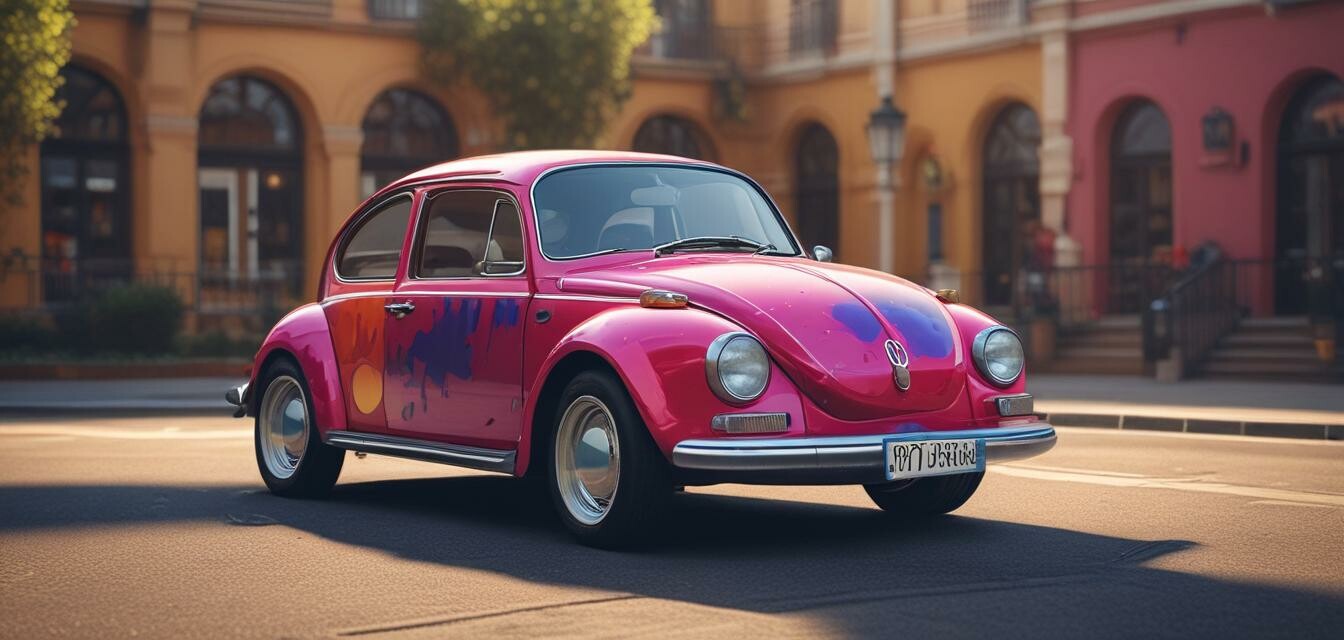
Step-by-Step: Painting Your VW for a Custom Look
Key Takeaways
- Select the right tools and materials for a flawless paint job.
- Proper preparation of the car is crucial for adhesion and finish quality.
- Techniques such as spraying and rolling can achieve different effects.
- Safety gear is essential when working with paints and solvents.
- Finishing touches can enhance the overall look of your custom paint job.
Personalizing your Volkswagen (VW) car can transform it into a unique expression of your style. A fresh coat of paint is one of the most effective ways to achieve this. Whether you’re starting with a standard model or enhancing a classic, follow this guide to paint your VW for a custom look. Below is a detailed, step-by-step approach to ensure a professional finish.
Tools and materials you will need
| Tool/Material | Description |
|---|---|
| Spray gun or roller | For applying paint smoothly. |
| Paint (base and clear coat) | Choose automotive-grade paint for durability. |
| Sandpaper | For surface preparation and smoothing; use various grits. |
| Masking tape | To protect areas from paint overspray. |
| Drop cloths or newspaper | To protect surrounding surfaces while painting. |
| Personal Protective Equipment (PPE) | Including gloves, goggles, and a respirator mask. |
Step-by-step guide to painting your VW
Step 1: Prepare your workspace
Before you begin painting, set up a clean and well-ventilated workspace. Ideally, choose a garage or an outdoor space protected from dust and debris. Lay down drop cloths or newspapers to shield the ground.
Step 2: Clean your VW
Thoroughly wash your car with soap and water. Remove any contaminants like tar and grease to ensure a smooth painting surface.
Step 3: Disassemble necessary parts
If needed, remove trim pieces, bumpers, and other components to avoid overspray and achieve cleaner lines. For guidance on what parts to remove, refer to our how-to guides.
Step 4: Sand the surface
Using sandpaper, scuff the car’s surface to help the paint adhere better. Pay special attention to rusty areas and apply a rust treatment if necessary. Clean off any dust after sanding.
Step 5: Mask areas you don’t want to paint
Use masking tape and drop cloths to cover windows, wheels, lights, and trim. This step is essential for achieving a professional finish.
Step 6: Apply the base coat
Using a spray gun or roller, apply an even base coat of paint. Start from the top and work your way down in smooth strokes. Allow the paint to dry as per the manufacturer's instructions.
Step 7: Apply additional coats if necessary
If your desired color requires it, apply a second base coat once the first coat has dried completely. Always follow drying times to ensure a seamless application.
Step 8: Finish with a clear coat
A clear coat protects the paint job and adds depth. Spray it on in the same manner as the base coat. This step is key as it provides durability against the elements.
Step 9: Reassemble and clean up
Once the paint is completely cured, remove the masking tape and reattach any parts you previously removed. Clean your workspace and dispose of any used materials properly.
Safety tips when painting your VW
- Always wear personal protective equipment like gloves, goggles, and masks.
- Ensure good ventilation in your workspace to avoid inhaling fumes.
- Store hazardous materials safely and follow local regulations for disposal.
Common pitfalls to avoid
- Rushing the drying times can ruin your paint job.
- Neglecting to sand the surface properly can result in a poor finish.
- Failing to mask well can lead to overspray and mistakes that are difficult to fix.
Pros
- Customization enhances the aesthetic appeal of your VW.
- It can improve resale value if done professionally.
- Allows for expression of personal style and creativity.
Cons
- Painting can be time-consuming and requires patience.
- Improper techniques may lead to unsatisfactory results.
- Initial costs for quality materials can be significant.
Conclusion
With the right tools and techniques, painting your VW can be a rewarding project that yields impressive results. Whether you opt for a bold color or a subtle finish, this guide provides the necessary steps to ensure a custom look that you can be proud of. For more information on upgrading your VW, check out our exterior upgrades page for potential enhancements!
